#ヒロミックス
Text
HIROMIX: SHAPING THE IDENTITY OF 90’S JAPANESE FEMALE YOUTH

A quick look into Japanese pop culture and they're everywhere. Representations of teenage women in paintings, album covers, graffiti, anime, manga, magazines, video games, commercial messages and a whole lot of cultural products.
Today, the image of the teenage student and the paraphernalia that surrounds her is synonymous with contemporary Japan, at least, the Japan that is massively known in the west.
However, when we look at these familiar and popular images of young Japanese women, we must ask ourselves if we really know the real people behind those media icons, if we really understand and are able to recognize their true identity over the one that the pop machinery built for them.
And no other was able to communicate this identity, this true identity of the Japanese youth better than the photographic work of "Hiromix", Hiromi Toshikawa.
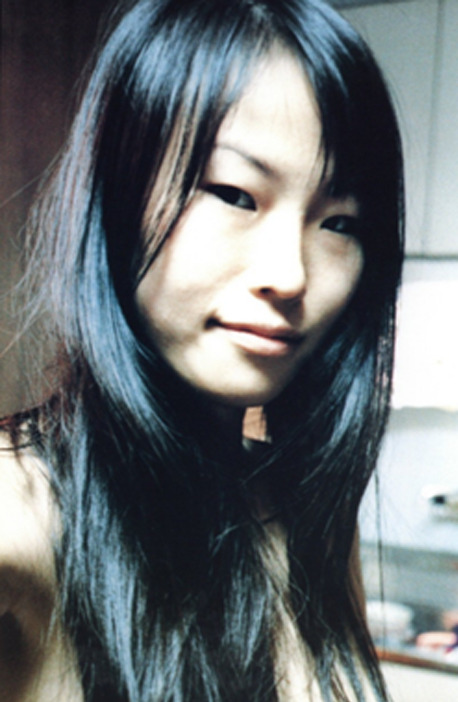
Hiromix self-portrait from the book, Hikari (1997)

Hiromix self-portrait from the book, Girls Blue (1996)
Born in 1976, Hiromix is a Tokyo photographer who, along with Yurie Nagashima and Mika Ninagawa, is considered the main instigator of a photographic movement in which, fostered by a cultural shift, point & shoot cameras and the 'Purikura' (Print Club) culture, driven by kiosks and coin-operated photography machines, Japanese teenagers, and especially, teenage Japanese women from the early 90's, took center stage in a new visual language.
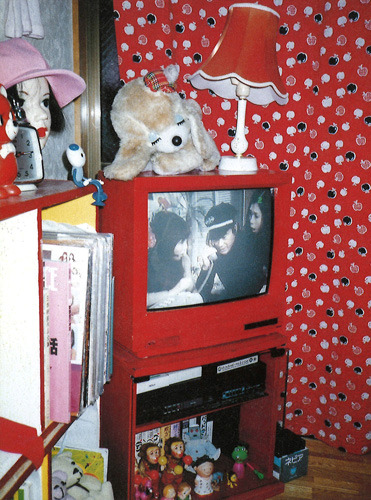
Photograph from Seventeen Girl Days (1995)
While still part of an underground movement, her breakthrough came through more traditional means, when she won the 1995 New Cosmos of Photography Award, sponsored by Canon and selected by Nobuyushi Araki, the icon of erotic photography and Japanese photo diary.
Her awarded, "Seventeen Girl Days", consisted of 50 pages of photographs from her daily life as a high school senior. Self-portraits in her underwear, objects in her room such as her television and stuffed animals, photographs of her half-eaten breakfast, blurred portraits of her friends and daily activities, images that helped to build a world of the intimately feminine, personal and unknown to a nation accustomed to overly sexualized representations of women, created, of course, by men.

Photograph from Seventeen Girl Days (1995)
In the same year, Studio Voice magazine, specialized in youth movements, but with a base of middle-aged photographers who had nothing to do with their readers, issued a volume dedicated to young photographers, trying to find a new platform.
Hiromix, then 18 years old, was one of those photographers who answered the call and her work reached a commercial milestone with the publication of volume 236, captivating an audience of youngsters, photography aficionados, critics and central figures of the medium alike like Takashi Homma. Such reception led to volume 243 of the magazine under the title "We Love Hiromix", dedicated entirely to her work, with a profile written by family, friends and Nobuyoshi Araki himself.
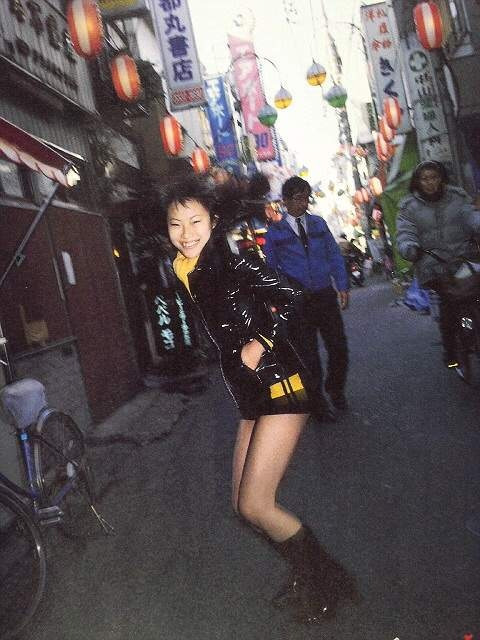
Excerpt from Studio Voice 243, "We Love Hiromix" (1996)
Hiromix's success and her influence on photographic culture was no coincidence. After the explosion of the economic bubble of the 80's, Japan, during the 90's, plunged into an economic crisis that shifted the focus on those who make and shape pop culture.
During the economic boom, men and the salaryman became the central figure on how entertainment and culture were consumed. The big companies that flourished during this time and the salaries they paid, helped the salaryman feed all commerce, from bars and restaurants, to art galleries and their exponents.
Consequently, women took on a secondary, traditionalist and almost ornamental role. The modeling industry and the growth of the idol phenomenon of merely "cute" idiosyncrasy, cemented how women were seen by their society.
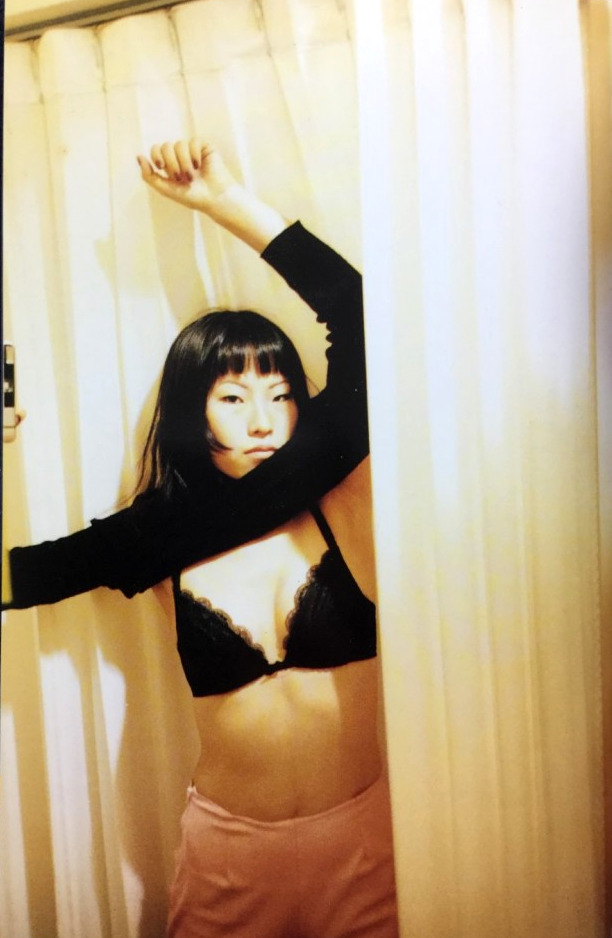
Hiromix self-portrait, from the book Girls Blue (1996)
It is not surprising that most famous photographic expressions of that time followed this trend. Proof of that are the portraits of Nobuyushi Araki, Eikoh Hosoe and Shoji Ueda that, while being no less artistic, represented a masculine point of view.
When the economic bubble burst in the early 90's, the salaryman and his abundance stopped being the engine that drove the economy and the companies, shifted their focus from him, to his sons and especially, his daughters, hoping to create an adolescent consumer culture while elevating them as trend makers and sexual icons.
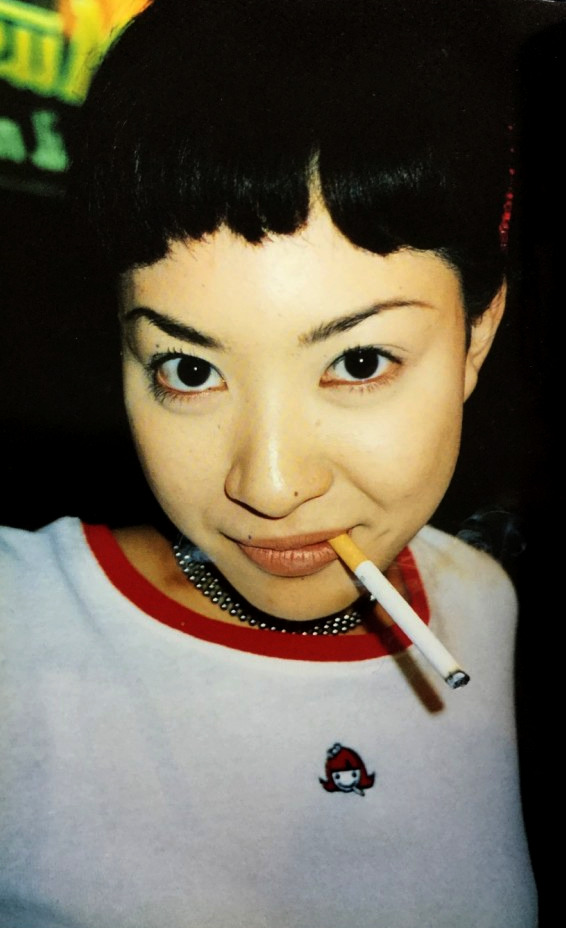
Portrait form the book, Girls Blue (1996)
Cultural shift in place, technology played a huge part building new forms of expression for teenage women, specifically photography. In 1990 point & shoot cameras, cheap, fast and easy to carry cameras were introduced and in 1995, Atlus Amusement Co. presented their “Print Club” (known as Purikura) machines, creative photo booths that became massively popular among youngsters.
In this environment, female Japanese teenagers began developing a unique aesthetic and artistic personality, where representations of their bodies and life belonged to themselves and not to the media.
Hiromix, with a Konica Big Mini camera and photographs processed in local kiosks, was able to condense this feeling of independence and adolescent freedom that the establishment photographers (mostly middle-aged men) couldn't access. A new movement called “Onnanoko Shashin” (Girly Photography) started to gain traction.

Excerpt from Studio Voice 243, "We Love Hiromix" (1996)
The term Onnanoko Shashin, coined in 1996 by the photography critic, Kōtarō Iizawa and compiled in his 'Shutter & Love: Girls are Dancing On in Tokyo' of the same year, tries to explain why young women began to take photographs in the privacy of their world and far from the common places where they were regularly photographed, like familiar and school year photo books.
Kōtarō Iizawa, described the changing times in which the women of the movement grew up (mostly, born in the 70s): an environment characterized by superficiality, consumption, the weakening of the sense of space and even the typical patriarchal values of Japanese culture.

Snap from the book, Hikari (1997)
When the bubble burst, the overload of pop information developed an innate aesthetic vision in young urban women, empowered by a new revaluation of femininity, against the machismo culture that were perpetrated through the 80's. Fashion, music and photography were their main artistic expressions.
When it comes to the technique of these new photographers, Kōtarō Iizawa argued that women preferred the inspiration and opportunities related to point & shoot cameras, automatic and easy to use, in contrast to male photographers, who preferred methodology and structure, related to SLR cameras. This was called “the female principle”.

Snap from the book, Hikari (1997)
Onnanoko Shashin, has been widely criticized and even rejected by its members, such as Yurie Nagashima (who was the first photographer under this trend), who argues that the term suggests that women do not have the technical skill to handle professional equipment, which was obviously not true, they decided to use point & shoot cameras because they were effective for their work and expression.
That is why in 2000 when Hiromix, Mika Ninagawa and Yurie Nagashima as 'Onnanoko Shashin' won the Kimura Ihei Award, one of the most important photography awards in Japan, Yurie Nagashima considered rejecting it, since she believed their work (was seen among the photographic medium as one more representation of "cute", but ignoring its feminist message.
In that sense, it is important to note that, while Onnanoko Shashin, is a useful term to recognize the movement and its protagonists, it doesn’t express their intentions, nor meaning.
Hiromix, did not openly challenge the patriarchal structures of her society, but was indeed feminist. Her approach tries to recover the representations of the daily life of Japanese teenage women and build a real image of their identity, far from the cute, shallow and conformist agenda of the media.
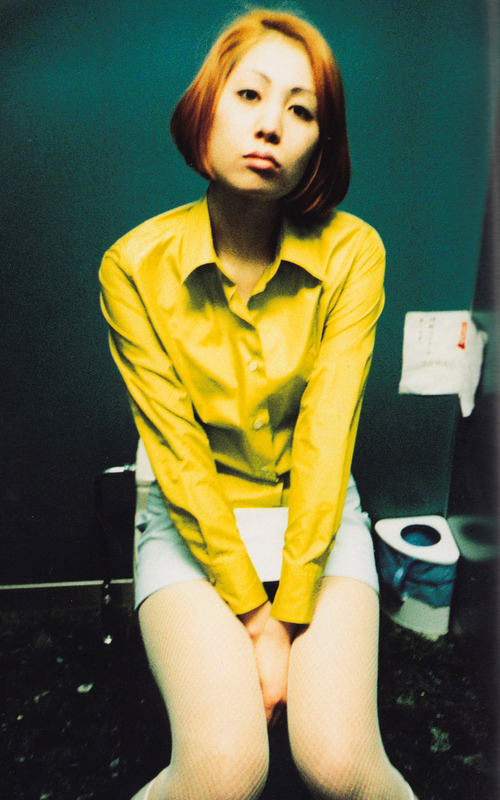
Portrait from the book, Hiromix Works (2000)
Seeing through her photos is reaching a sense of daydreaming, a special feeling of living the moment. Their protagonists escape from reality and capture a vivid memory of momentary freedom that can materialize on the most mundane and familiar object but even when capturing a memory, there’s no space for nostalgia, everything is a flash, there’s no time to separate reality from the daydream. Before you realize, the world they built has melted away.
Hiromix, did not openly challenge the patriarchal structures of her society, but was indeed feminist. Her approach tries to recover the representations of the daily life of Japanese teenage women and build a real image of their identity, far from the cute, shallow and conformist agenda of the media.
Seeing through her photos is reaching a sense of daydreaming, a special feeling of living the moment. Their protagonists escape from reality and capture a vivid memory of momentary freedom that can materialize on the most mundane and familiar object but even when capturing a memory, there’s no space for nostalgia, everything is a flash, there’s no time to separate reality from the daydream. Before you realize, the world they built has melted away.
This world does not compare with the expectations for the future nor with what Japanese society, incredibly rigid with teenagers and their expectations.
"They are not interested in contributing to the Gross Domestic Product of Japan other than paying the restaurant bills," she declared before comments from people who positioned her (in her opinion, wrongly) as a spokesperson for her generation.

Portrait from the book, Hiromix Works (2000)
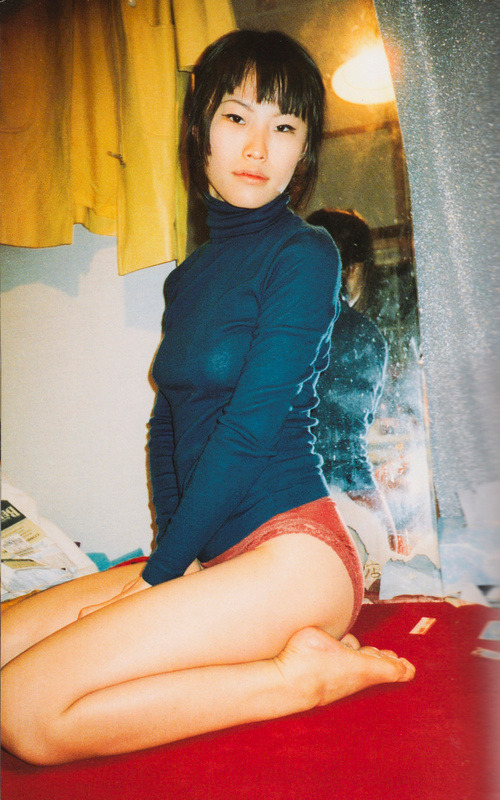
Hiromix self-portrait from the book, Girls Blue (1996)
In 1996, a year after her discovery, her first photobook, “Girls Blue” was edited, which consisted of 122 pages of photographs from a selection of more than 30,000, taken since she was 17 years old, including those previously seen in “Seventeen. Girl Days ".
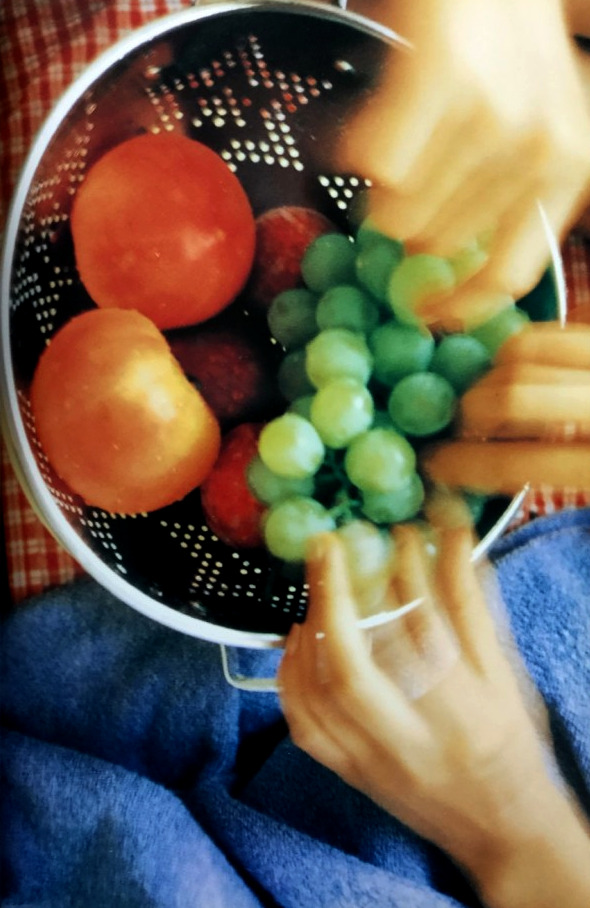
Snapfrom the book, Girls Blue (1996)
At first, the book and her work were not received with much sympathy among the most recalcitrant part of the photographic community, calling it "amateurish", however, the visual language of Hiromix was not meant to praise perfection but to appreciate imperfection and, like her contemporaries, even though she was perfectly capable of use specialized equipment, she preferred her Konica Big Mini and the novel disposable cameras, in a disdain for the “smokescreen” of complex photographic processes.

Snap from the book, Girls Blue (1996)

Portrait from the book, Hiromix Works (2000)
Naturally, this form of photography that removed the barriers of technique and process, prompted teenagers across Japan to explore their own style of photography, unleashing a creative wave based on the ordinary, with exponents such as Maki Miyashita who expanded the concept of teenage girls and their spaces, Kayo Ume who explored the daily life of Japanese children and Tomoko Sawada, merging identity, essence, personality and social significance with her ID400 series.
During the years leading up to the 2000s, Hiromix expanded her creative spectrum into advertising, working with clients such as alternative radio station J.Wave and Sony Music, with her portraits of electronic vanguardists, Squarepusher and Aphex Twin, and model photography with the photobook , Japanese Beauty, despite being a vocal critic of this photographic genre.
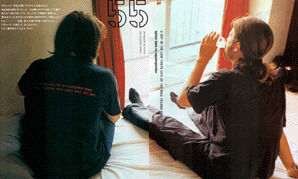
Aphex Twin and Squarepusher by Hiromix, Sony Music (1997)

Aphex Twin and Squarepusher by Hiromix, Sony Music (1997)
In addition to her photographic work, she explored music with an album, Hiromix 99 '(1999) and three EP's with Kiwa Kagata as The Clovers, and two EPs on her own, "Oh My Lover" (1996) and "Hello I Love You!" (1999). All works aesthetically and sonically related to the Shibuya-kei, retropop and mod revival movement, popularized by musicians like Flipper’s Guitar and Pizzicato Five.
In 2000, Takashi Murakami founded SUPER FLAT, the artistic movement that ended up ruling Japanese aesthetic and psyche during the first decade of the 00 '. Hiromix's work were included in SUPER FLAT's presentation exhibition at Shibuya PARCO Gallery with artists like Masafumi Sanai, Chikashi Suzuki, Aya Takano, Katsushige Nakahashi and Murakami himself, solidifying her position as part of the vanguardist artistic generation for the end of the century.
youtube
In 2000, Takashi Murakami included Hiromix work as part of the SUPER FLAT exhibition at Shibuya PARCO Gallery together with artists like Masafumi Sanai, Chikashi Suzuki, Aya Takano, Katsushige Nakahashi and Murakami himself. Being part of SUPER FLAT, the artistic movement that shaped an entire generation of Japanese artists (and still does), Hiromix, solidified her position as part of the visual language that helped build Japan’s position as an artistic epicenter during the 00’s decade.

Portrait form the book, Hiromix Works (2000)
In line with the SUPER FLAT manifesto, which explains how Japanese visual culture is not taught in art schools, where art was taught from the Western point of view, Hiromix developed a distinctly Japanese body of work, “the 2D feeling", as Murakami names it, that pop products transmit, such as manga, video games and anime.
During the 2000s, Hiromix established herself as a cult figure with eight compilation books of her work, five national exhibitions, (including one at the Tokyo Museum of Contemporary Art) meanwhile her creativity embraced new frontiers: from design, creating album covers for The Cribs, to fashion, working with global brands like KENZO, and even acting, with a cameo in Sofia Coppola's Lost in Translation.

Snap from the book, Girls Blue (1996)
Much has been said about how Hiromix's work signified the selfie culture for the 90's before social media. Although there's some kind of resemblance, her current influence is much more noticeable in young Japanese photographers who, like her, take advantage of the technological facilities to tell their own perspective of the environment that shapes them.
Young photographers such as Yoshiyuki Okuyama, Sara Masuda, Ada Yasuya, the “emoi” movement and especially, Masumi Ishida, develop a new perspective, fostered by the expansion of social media, this time not telling a story of turbulent times, but a story of stability even opportunities.
Although Japanese photographic culture and its female protagonists have existed since the invention of photography as a vehicle of expression. Hiromix and her peers brought a new point of view that broke with paradigms of how the identity of the teenage women should be understood, far from the pop icon and much closer to their own realities and most importantly, told from their own visual story.
#Hiromix#Tokyo#Sabukaru#Shibuya kei#90#90s#2000#y2k#Aphex Twin#Squarepusher#Photography#Photo#1997#1998#1996#1999#ヒロミックス#Takashi Murakami#Japan
89 notes
·
View notes
Text
私にもサブカルのこと書かせて-3(CUTIE)
CUTIEにはファッションの面でとても影響を受けました。
あの頃のスナップページに出てくる人たちは、おしゃれな服を着て「バタイユを読みました」とかコメントしていました。今は反知性主義な人がいるからそういうことを言うと馬鹿にされますね。
CUTIE系のはちゃめちゃなインテリアもありました。何というのかわからないけど、青文字系インテリアスナップとでもいうあの手の世界では、アントニオーニの「欲望」と「トレインスポッティング」のポスターが長いこと幅を利かせていた気がします。
私が初めて岡崎京子の漫画を読んだのはPeeWeeという雑誌で、双子が出てくるやつで特に面白くはありませんでした。その後CUTIEで連載していた作品を知ったけど、全面的に好きではないなぁと思いました。「リバーズ・エッジ」がちょうどリアルタイムで連載されていて、あまりの展開に私の通っていた学校にいたほんの一握りのサブカル女子達のテンションですらみるみる下がっていったのを覚えています。「pink」くらいまではまだ女の子の感性いいよねー的な雰囲気があったけど、あそこまでやれとは言ってないわーという空気でした。これは私が実際に体験したもので、決してみんながみんなあの作品を絶賛したわけではなかったのです。
それなのに、あっというまに「リバーズ・エッジ」は当時のもやもやした空気を見事に描いた、漫画にしかできない表現、などと言われるようになって、いまさら映画にまでなってしまった。
映画はGYAOで見たけどなんかダサい作品だったし、るみちんと観音崎くん役の人がヨゴレすぎて気の毒になってしまいました。あの2人他のドラマとかで見かけないし。(活躍してたらごめん)
岡崎京子の作品に熱狂的なファンがいるのはわかります。わかるけど、私はなんかあの自分と誰かを傷つけないと生きてる実感が湧かないのよみたいな感じが苦手です。
当時、私より2つ3つ年上のある女性が「pink」のことを「売春しても守りたいものがある、っていいよねー」と言っていて寒気がしました。結局のところほとんどの女の子というものは、本当にはなかなかそこまでは行けなくて、ガールカルチャーというものをフィクションとして消費してしまうんだなというのがずっとあります。ごく一部の女の子達がこういう作品やサブカルおじさんの言うことを間に受けてしまって痛い目に合うこともあるけど。
その頃はそういう、生きてる実感を味わうための、マイナーな雑誌ではないちゃんとした出版社から出た死体の本とか悪趣味なものを集めた本とかあったけど、私個人としてはダイアン・アーバスの写真集をこっそり見るのが精一杯でした。ダイアン・アーバスも「毛皮のエロス」という映画になって、なかなかいい作品だったけどAmazonのレビューで「でもこれ不倫の話ですよね」って書いてる人がいてびっくりしました。
その後ボリス・ヴィアン原作の「うたかたの日々」を漫画化した連載が始まって、60年代に作られた映画のリバイバル上映もありました。私は「日々の泡」というタイトルの方を読んでいたので「うたかたの日々」というタイトルがあっという間に主流になって納得いきませんでした。そしてそもそも、この小説がとてもつまらなくて嫌いでした。私はこの頃から今までずっと、そして多分これからも、主人公が難病で死ぬとわかっている作品の面白さがよくわかりません。「うたかたの日々」の映画は装苑の長沢節の映画批評コーナーで取り上げられて褒められていました。長沢節も微妙に私と好みが合いませんでした。この人毒舌がうまくないし、男でも女でもきれいでかわいい人が出てるだけでだいぶ点数アップするんだよな、と思って読んでました。
ただ、漫画雑誌でもないのにあれだけまとまった作品にできたCUTIEってすごいと思います。それともCUTIEはなんにもしてなくて岡崎京子がすごかったのか、その��の話を聞いたことがないので誰か教えてほしいです。どのくらい編集者が関わってたんだろう。確かあの頃ナガイ編集長という人でした。
そのあと安野モヨコが載るようになって、岡崎京子に比べると読みやすい漫画でした。安野モヨコは今落ち着くところに落ち着いてるようで嬉しいです。おしゃれ漫画家だったのに、すっかりオタクの人たちからミューズ扱いされるようになっていてほっこりします。
CUTIEのようなファッションを好むのはモテない女の子扱いだったけど、ひとつのスタイルを作り上げた雑誌だと思います。きちんと、若い人たちにファッションとカルチャーを結びつけてあげていた。系統としてはパンク系、エスニック、スポーツミックスのクラブ系、ロリータ(ゴス含む)、古着やレトロ系が軸だったと思います。あとチープシック特集だと便所サンダルとかかっぽう着とか載せてたんだけど、覚えてる人いるかなぁ。チープシック特集というのはCUTIEに限らず他の雑誌も1年半に1回くらいやるのですが、どこも必ず「文化屋雑貨店」のアイテムを載せていました。私もよく行きました。
堀越絹衣は大物スタイリストという感じでたまにしか載っていなかったのですが、吉川ひなのがモデルを務めていた「インナーウェアで街に出よう」という特集が大好きで、実はまだ切り抜きを持っています。この人のページはクレジットに「スタイリスト制作物」というのが多くて、それがまた良かったのです。スタイリスト制作物はいいけど、「スタイリスト私物」と「参考商品」ばっかりのページは「ハァ?」って思ってました。
あと名前を思い出せないのですが福島さん?みたいな名前の若いスタイリストの方が活躍していて、本人もよく出ていました。ジャージに古着のコットンスカートとか、ラインストーンの大きな飾りがついたスニーカーとか、そんな感じのスタイリングが印象に残っています。今でも100円ショップのラインストーンのシールとか見るとかわいいな〜と思ってしまいます。(集合体恐怖症なのであんまり小さいのはイヤ〜ってなるけど)
私は断然レトロ派でちょっとだけパンクとロリータが好きだったので、ジャージやスカートとパンツの重ね着はしなかったし、チビTとロングスカートも着なかったし、ヒステリックグラマーやスーパーラヴァーズもあまり興味ありませんでした。でもその頃はアニエス.bなどのフレンチカジュアルとギャルがメインストリームな感じだったので、どこかに勝手な仲間意識はあったような気がしています。高いものから安いものまで、とにかく風変わりで着ることが楽しいと思えそうな服がいっぱい載っていました。手作り系も楽しかったし真似しました。
私はオリーブを読む時と同様にCUTIEに載ってた人たち全部が好き、というわけではなかったので、安田トキコや花代は苦手でした。2人とも読者からするとお姉さんの年代に当たったのですがスタンスは違えど厚化粧する女の子をディスるようなことを言っていて、年下の子にこういう言い方をする人にはなりたくないな〜と思いました。態度も見た目も好きじゃなかった。カヒミ・カリィはこだわりはわかるけどインタビューでは大体いつも同じことばかり言っていました。(岡田眞澄や伊武雅刀などとデュエットしたい、小柄なのでキッズサイズを着てる、ずっと探してるデザインの服があるんだけど見つからない、の3本)あとCUTIE全体にちょっと下品さがあって、そこが好きになりきれない面がありました。CUTIEに限らず、どの雑誌も好きな部分だけ受け入れるという感じでした。
そしてあの頃からオシャレ動物愛護、オシャレ環境問題みたいな人たちがいて、ユアンが井浦新やKIRI等の他のモデル達から「ユアンはゴミ問題の話ばっかりしてる」とか言われていました。ヒロミックスもゴミ問題とかよく言ってた。井浦新はかっこよかったけどこんなに活躍するようになるとは思ってませんでした。まさか毎週毎週ドラマに出て視聴者を身悶えさせるようになるとは。市川実日子も。姉の実和子の方がシュッとしててきれいだと思ってたけど、実和子はその頃恋人だった三原康弘(やっちん)との微妙にすさんだポラロイド日記を連載していて、だんだん私もマイペースな実日子の方が好きになりました。
その後何年か経って驚いたのは、読者モデルだった村山ゆきが片桐仁の奥さんになってたことと、エアギターの金剛地武志が深夜番組で一回だけ見たyes mama ok?だったことです。イエママはCUTIEの新譜コーナーで紹介されてたけど、なんか渋谷系の搾りかすみたいだった。村山ゆきと横山優貴が出てくるようになった頃、私もあんまりCUTIEを買わなくなりました。ゴシップみたいな話ばっかりですみません。
(つづく)
7 notes
·
View notes
Text
Art and Fashion Photography:
A Japanese Renaissance
Hayashi Fumihiro
今の日本に、本当の意味でのファッション・フォトグラファーは、僅かな例外を除いて存在しない。広告写真の影響力が強い日本の写真界では、広告、芸能といった商業写真での成功が、ほとんどの写真家の目標であるといっていい。ファッション写真は、広告カメラマンになるためのプレゼンテーションに過ぎない場合が多く、ファッション写真だけを撮り続ける写真家は皆無といっていい。さらに、欧米の文化、セレブレティーに対してコンプレックスの根強い日本のファッション写真界は、海外でこれほどまでに日本文化が注目されているにも関わらず、欧米の有名写真家の表層的な模倣に執着する。そのことは、東京の街に氾濫するファッション企業のビルボードや広告ポスターを見れば一目瞭然だ。日本人の白人コンプレックスは根深い。また、最近のファッション誌は、ユニークな才能を持つ新人のファッション・フォトグラファーの作品よりも、素人の芸能人、スタイリスト等の知名度のほうに価値を感じるようである。大多数の日本の雑誌のファッション・ページは、美意識やクオリティーに対する判断力を利益至上主義で失ってしまい、さもしいカタログ的な自己顕示欲の坩堝と化してしまった。
ただ、これは90年代後半、バブル経済崩壊から続いた経済的不況に影響された、日本の“失われた10年間(ジャパニーズ・ロスト・ジェネレーション)”時代の話である。この10年間で、日本人の美意識、倫理観、価値観は、大きく変化、堕落し、虚無主義と拝金主義が世の中全体を覆っていった。そして、壊滅的なモラルの崩壊、無秩序な混沌が極まった今やっと、日本文化は、ルネッサンス的な新しい変革の時代を迎えようとしている。その最も大きな流れは、まず白人コンプレックスからの脱却から始まった。子供たちを熱狂させるマンガ、アニメーション、コンピューター・ゲームなどのオタクカルチャー、健康志向からの日本食や禅、高性能のハイテクノロジー、海外の人々が伝統文化のみならず、日本の現代文化に大きく影響を受ける現状を実際に感じた、欧米(特にヨーロッパ)で教育を受けたクリエイター達の帰国は、その変革の重要なきっかけとなった。彼らは、海外の地において、“オリジナリティーとは何であるか”という事を徹底的に教え込まれる。そのことは、自分は日本人であるという事を強烈に再認識させることになる。欧米文化への憧れ、模倣ではなく、欧米文化との違いが創造の源であることに気づくのである。彼らが、影響を与える時代、ポスト・ロストジェネレーションが始まったのである。今考えれば、“失われた10年間”は、DJ的なサンプリング・カルチャーとアメリカ的な大量消費文化に、日本のファッション界が大きな影響を受けた時代であったと言えるのではないか。サンプリング、コラボレーションという心地よい英語のフレーズによって、模倣に何の疑問を持たなくなった日本のファッション界は、オリジナリティーを片隅に追いやり、業界自体を異形で未熟な物質主義に変容させてしまった。
このような、現在の日本のファッション写真界を取り巻く状況を理解した上で、読んでもらいたい。
日本のファッション写真の大きな転機は、やはり90年代であった。そして、この90年代の東京のイメージを決定付け、その後の日本の写真界全体に、最も影響を与えたのがホンマタカシであろう。日本人独自のロリータ趣味を全面に押し出した現実感溢れるポートレイト風のファッション写真は、アートとファッション写真、ドキュメンタリーとファッション写真の融合であり、彼の写真から強烈に感じられるニヒリズムは、近未来の日本への警鐘のようであった。無機質に殺菌されたシステムの中で、自らのアイデンティティーを見失い、凶暴なグローヴァリズムに翻弄される日本への、誰しもが持つ漠然とした不安、終末の予感。ホンマタカシの写真は、ジャンルを超えて多くの人々に支持され、多くのフォロワーを生み出す。今や日本を代表する作家となった、ヒロミックス、佐内正史、本城直季らは、多かれ少なかれホンマタカシが切り開いたスタイルの延長上に独自の世界観を築き上げたといっていい。そして、彼の広告、アート、ファッション、ヌード、グラビア、建築、編集、映画等のあらゆる分野へボーダレスな進出は、良しにつけ、悪しきにつけ多くのカメラマンの指針となったのである。
もう一つ、90年代の日本のファッション写真に大きな影響を与えたファッション誌が、パリで出版されるPURPLE誌である。アートとファッションの融合をテーマに、一貫したインディーズ・スタイルで数多くの新しい才能を世に送り出してきたこの雑誌は、日本のカルチャー、サブカルチャーにも早い段階から興味を示している。そのため、日本人アーティストも多く参加しているが、その中でも別格なのが、このPURPLE誌で創刊以来、ファッション写真をとり続けている鈴木親であろう。鈴木親は、今の日本では数少ない純粋な意味でのファッション・フォトグラファーであり、世界に通用するオリジナリティーを持ち合わせている。彼のファッション写真は、マルタン・マルジェラに代表されるアントワープ系の内向的なデカダンスの影響を色濃く受けながらも、日本の伝統的な文化の品と静謐さを感じさせる。そこには日本人しか表現する事の出来ない情緒がある。彼は、ファッション写真家であることにこだわり、ファッション写真と作品以外は、ほとんど撮影しない。商業主義一辺倒の今、鈴木親の隠者のような撮影のスタイルは、彼のオリジナリティーを磨き上げた。その独特の色彩と間を感じさせる作風は、世界に影響を与えるファッション写真家になることを予感させるに十分である。
ただ、このような日本のファッション写真界の曖昧なあり方は、決して悪い事ばかりでもない。その、通過儀礼的なポジションから、様々な分野の写真家がファッション写真を撮るために非常に多様性のあるものになっている。例えば、アフリカ、中東、東南アジア、南米等の“滅びゆく少数民族”のポートレイトの作品で、ファビアン・バロンに絶賛され、写真集“TRIBE”を出版した小林 響は、欧米のファッション界では、90年代最も評価された日本人写真家であろう。荒木経惟、植田正治、ヒロミックス、新津保建秀、富永民生、久家靖秀、佐内正史、石坂直樹、ザ・グレート・ザ・歌舞伎町、平野太呂、本城直季、米原康正、井賀孝といったアート、グラビア、広告、ルポルタージュ、スポーツ等のジャンルで活躍するファッション写真家以外のファッション写真をこれほどまで沢山見る事のできるのは日本だけだろう。そして、ファッション写真を変革するのは、実は、他のジャンルから来た異端者の価値観である。マーティン・ムンカッチは、スポーツカメラマン。アーヴィング・ペンは、画家。ヘルムート・ニュートンは、報道カメラマン。スティーヴン・マイゼルは、ヘア&メイク。マリオ・ソレンティは、モデルであった。そう考えると日本のファッション写真界は、可能性に満ち溢れている。止まれる者の出現。。日本人としてのオリジナリティーを追求して、美意識と技術を極めた上で、ファッションという世界に魅せられ、美の本質を探究したい写真家が現れたときに、きっと日本のファッション写真界はドラマティックに変わるはずである。サンプリングの達人から、オリジナリティーへ、欧米コンプレックスからジャパニーズ・ルネッサンスへの意識の変化。それが、近い将来であることだけは間違いない。
1 note
·
View note
Photo
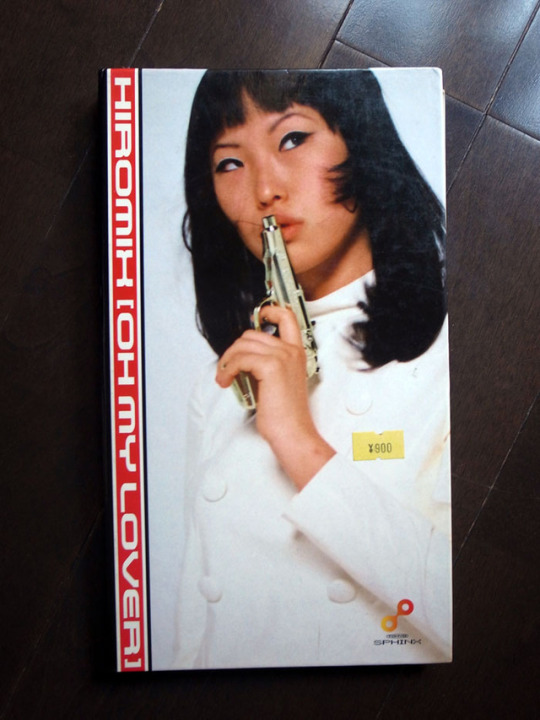









HIROMIX OH MY LOVER (Inner Brain, 1996) is a fantastic relic from the late 1990′s Japanese photo scene. Released in the midst of “Girly Photo” mania, this Hiromix photobook includes both a music CD of the photographer’s 60′s mod tribute group The Clovers and a photo CD-ROM that’s compatible with the Sega Saturn, the Panasonic 3DO, and Windows 95.
1K notes
·
View notes
Photo

ころなちは 【7日間ブックカバーチャレンジ】4日目 松屋町の立ち飲みベトナム料理屋さんtằmの@takitakitakky519nからバトンが来たこの企画、これは読書文化の普及に貢献するためのチャレンジで、好きな本を1日一冊、7日間投稿します。 本についての説明は必要なく、表紙の画像だけをアップする。その都度一人の友達を招待し、このチャレンジへの参加をお願いするというルールだそうです。 指名された人はスルーOK&次の人を指名するかどうかもスルーOKです。 さてわたしの4日目は→ 「Hiromix works」 です。 この「Hiromix works」は2000年にロッキンオンから出版された写真集です。高校生の頃にいわゆる写真の仕事に向き合い始めたきっかけになったHiromixのworksです。私の父も建築の写真家として今も健在ですが、いまいち写真の仕事っていうのがよくわからないものでした。雑誌で見かけたHiromixの写真はさらに私を混乱に陥れました。とても自由だけど子供のような刹那的な写真たちです。 そのおかげで表面の裏に見える物を大切にしようと思えるようになりました。 それは自分の仕事のスタイルの根底に潜んでいるものになりました。今でもバイブルです。 次へのバトンはすでに初回から辞退していますがブックカバーチャレンジは最後までやってみようと思います。 ・・・・・・・・・・・・・・・・・・・・・・・ #ブックカバーチャレンジ #bookcoverchallenge #7日間ブックカバーチャレンジ #hiromix #ヒロミックス #hiromixworks #ロッキンオン (Taco studio) https://www.instagram.com/p/B_ycG4ODmkE/?igshid=1m5v021h9rl58
0 notes
Photo

#tyo_mag #トーキョーマガジン #hiromix #ヒロミックス 本日は、コチラにオジャマンガ〜!「HIROMIX 個展」@ #アニエスベー 青山 オープニングレセプション☆ 90年代後半から、#写ルンです 写真家として活動していた彼女。作品は、なんとなくずっと観ていたけど、いい意味で雰囲気が変わってないのが、スバらしいね〜。人が多かったので、ゆっくり作品を見られなかったけど。。。人ゴミがニガテなアッシは、サクッと退散系☆ #写真 #写真家 #photography #photographer #展覧会 #exhibition #agnesb #東京 #tokyo https://www.instagram.com/p/B2PKFaljnnM/?igshid=1jryjngaizn7f
#tyo_mag#トーキョーマガジン#hiromix#ヒロミックス#アニエスベー#写ルンです#写真#写真家#photography#photographer#展覧会#exhibition#agnesb#東京#tokyo
0 notes
Photo



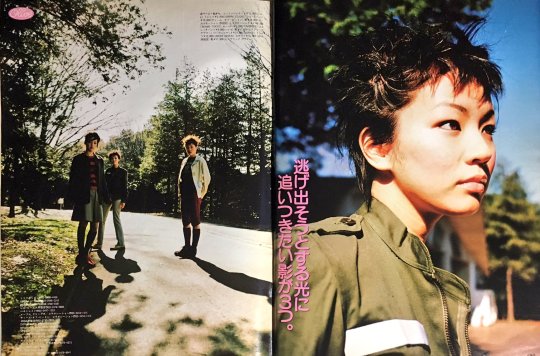
1997'ヒロミックスとモデルたち
model
市川実日子
明日海
徳田妃美
ヒロミックス オリーブ初撮り下ろし
夏日の一日でしたが春の陽射しのページから…
32 notes
·
View notes
Photo
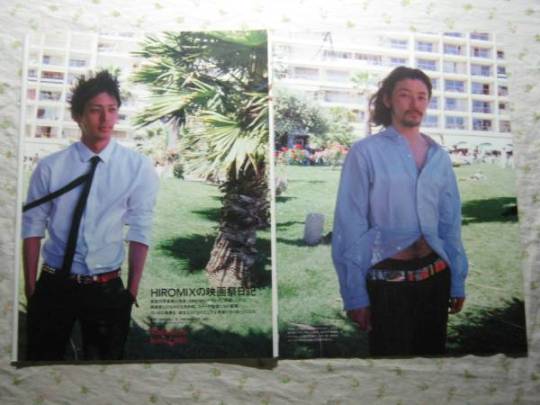
オダギリジョー×浅野忠信 IN カンヌ BY ヒロミックス
8 notes
·
View notes
Text
Weekly artist post 2
Hiromi Toshikawa (利川 裕美, Toshikawa Hiromi, born 1976), better known as Hiromix (ヒロミックス, Hiromikkusu), is a Japanese photographer and artist
Born in 1976, Hiromix won the 11th New Cosmos of Photography (写真新世紀, Shashin Shin-seiki) award in March 1995.She was nominated by Nobuyoshi Araki, for a series of photographs called Seventeen Girl Days.Her photographs depicted life from a teenager's perspective.She was also a judge for the Cosmos of Photography contest from 2011 to 2015.

Photo I took for her photo collections

Her works are all aimed at women, with bold ideas and different styles. When I first saw it, I felt that it was too open, including showing body,but I could find the charm and artistic expression brought by different ages and women from different angles.
12 notes
·
View notes
Photo

3/3J庭にて、ヒロミックスさんのもこもこシリーズをキャラにしたグッズを販売します☆当日はヒロミックスさんのもこもこした雑貨も一緒に置いておりますので、新刊と一緒に覗いて見てください♪
2 notes
·
View notes
Text
ヒロミックスとヌケメによる2人展「KAWAII未来」が高円寺で開催
#東京都杉並区高円寺南4247 2018年02月15日 08:35:00
HIROMIXとNukemeの2人展 「KAWAII未来」 会期:2018年2月16日(金)〜2月26日(月) 会場:FAITH住所:東京都杉並区高円寺南4-2-10 伊澤ビル 電話:03-5913-8279 営業時間:14:00〜24:00 定休日: 水曜 レセプションパーティ: 2月16日 18:00〜21:00(一般参加可能)
東京都杉並区高円寺南4247の近所のバー
0 notes
Text
Favorite tweets
ヌケメくんとヒロミックスの組み合わせ興味ある
— すげ (@ssuge) February 15, 2018
from http://twitter.com/ssuge
via IFTTT
0 notes
Quote
「撮りたいように撮る」をひとつの価値にまで高めるには、徹底的に、撮りたいように撮らなければいけません。
HIROMIX(ヒロミックス)に学ぶ、写真作品鑑賞の極意 | 写真のネタ帳
0 notes




